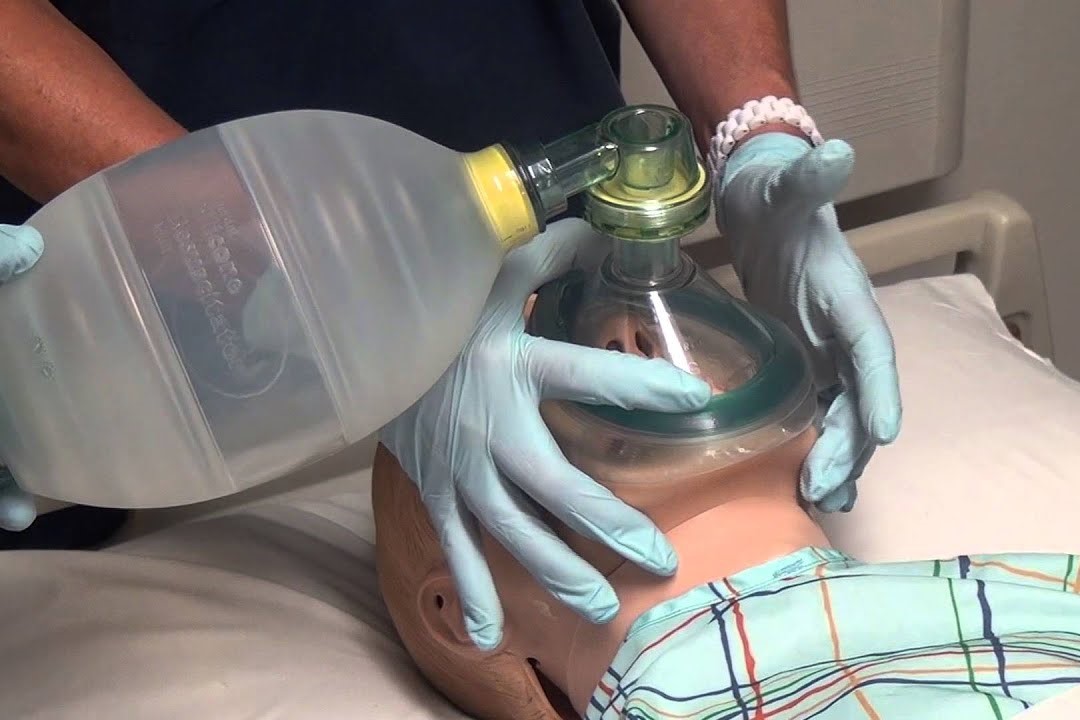
Ambu bag, salvation for patients with lack of breathing
Ambu bag: medical equipment, is actively used for artificial ventilation of the lungs. This device is equipped with all operating and intensive care units, as well as ambulances
The Ambu bag was invented by Henning Reuben and Hesse Holger in 1956 to prevent a polio epidemic.
They also founded the company “Ambu”, after which the device was named.
Feature of Ambu bag
The bags are different in size and vary in respiratory volume for children and adults.
They are easy to use, so they can be used by people who do not have medical education to provide first aid.
The Ambu bag has several different names: system, manual resuscitation, and pump for ventilation of lungs, respiration breathing mask, and means for pulmonary resuscitation.
The device consists of a mask and a cylinder attached to it.
Some models are equipped with oxygen dosage.
- Adult fixture is equipped with a mask, a tank of oxygen with a volume of 1800 ml bag 1500 ml. In this mixture out in a volume of ml. 800-1350. Dead zone is 168 ml., the Device is designed 45BPM compressions per minute.
- For children the mask of the third size is used. The volume of the oxygen tank is 750 ml, the volume of the bag is 550 ml, the air mixture comes out in a volume of 350 ml. The Dead space is 113 ml. The Device is designed for a maximum compression per minute of 105BPM.
- For babies apply the mask size. The volume of the oxygen tank is 500 ml, the bag is 280 ml. The Dead zone is 46 ml, the air mixture comes in a volume of 100 ml, the maximum number of compressions per minute is 98BPM.
Regardless of the variety, medical equipment is equipped with an oxygen tube of 2.1 meters, which allows you to connect it to the oxygen cylinder at a fairly long distance.
The use and types of Ambu bag
Medical equipment used:
- to save patients who have stopped breathing on their own.
- for neonatal resuscitation.
- during surgery and clinical death before the patient is connected to the ventilator.
By type of bag is divided into:
- Reusable. Available in every clinic and ambulance. It is used in the provision of assistance at the scene of accidents and other events, as well as in the transport of heavy patients in intensive care vehicles. The device can be sterilized.
- Disposable. It is used in case of emergency requiring urgent departure. The bag is equipped with an anesthetic mask, breathing and oxygen bag. Also included is a connector for gas inlet, oxygen tube, air duct, valve for pressure limitation. The bag does not require sterilization and is disposed of after use.
- For infants and children up to 10 kg
- For pediatric patients weighing 10 to 40 kg.
- Adult, for people weighing more than 40 kg.
The Ambu bag is used on the principle of compression of the cylinder by hands, from which air is released and sent to the human lungs, while the mask is applied to the patient’s face.
Thanks to the device, the lungs are saturated with oxygen, supporting human breathing artificially.
The bag is not used if the patient has a foreign body in the respiratory tract, vomiting is observed, the tongue has climbed into the larynx.
Ambu bag can come complete with adapters:
- Endotracheal tube or tracheostomy.
- Face or laryngeal mask with air duct.
After collecting the device, the physician begins to rhythmically compress the bag for admission of air into the lungs.
Depending on the situation, the compression interval can vary from 12 to 20 times per minute.
The device can be used at a temperature of -18 – +500C.
All additional components that come with the bag Ambu, have standard holes, allowing hermetically connected devices.
Instructions for using the Ambu bag
Medical equipment is used according to the instruction:
- The patient’s head is placed on a hard flat surface, slightly leaning back.
- Carry out the cleansing of the respiratory tract.
- If necessary, use an air duct or lower jaw is pushed forward to prevent the occurrence of the tongue.
- The respirator (mask) is tightly applied to the patient’s face.
- Pouch with oxygen squeeze with equal intervals with an average of 17 clicks per minute.
If the bag is damaged, there is a defect when connected to the balloon or the mask does not fit tightly to the patient’s face, then a positive effect cannot be obtained, so before using the device it should be carefully checked for serviceability and used according to the instructions.
Read Also:
Emergency Live Even More…Live: Download The New Free App Of Your Newspaper For IOS And Android
AMBU: The Impact Of Mechanical Ventilation On The Effectiveness Of CPR
Manual Ventilation, 5 Things To Keep In Mind
FDA Approves Recarbio To Treat Hospital-Acquired And Ventilator-Associated Bacterial Pneumonia
Pulmonary Ventilation In Ambulances: Increasing Patient Stay Times, Essential Excellence Responses
Microbial Contamination On Ambulance Surfaces: Published Data And Studies
Ambu Bag: Characteristics And How To Use The Self-Expanding Balloon
Oxygen-Ozone Therapy: For Which Pathologies Is It Indicated?
Hyperbaric Oxygen In The Wound Healing Process
Venous Thrombosis: From Symptoms To New Drugs
What Is Intravenous Cannulation (IV)? The 15 Steps Of The Procedure
Nasal Cannula For Oxygen Therapy: What It Is, How It Is Made, When To Use It


